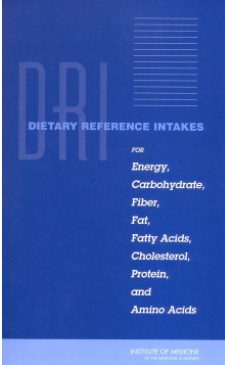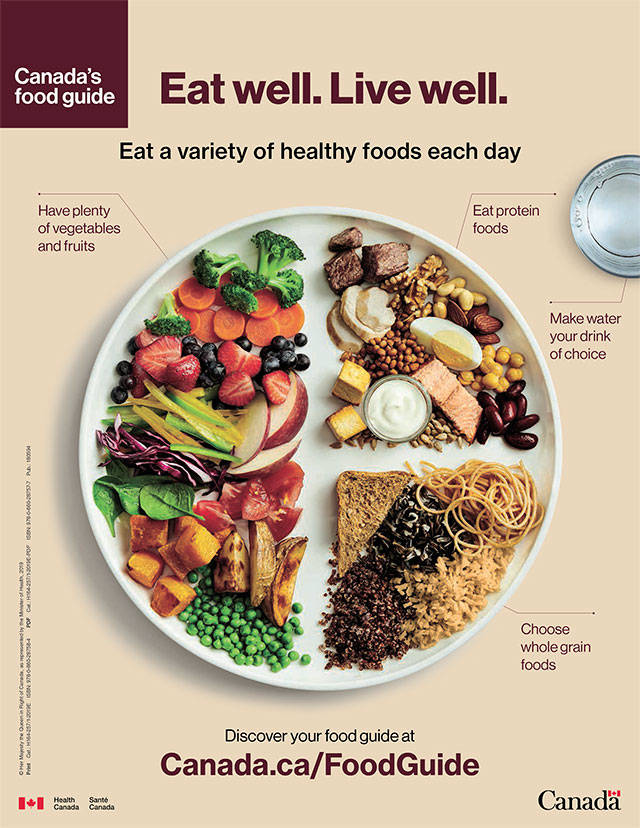Dietary guidelines provide guidance on a healthy eating pattern to help the public meet their nutrient needs and lower the risk of developing nutrition-related diseases.
|
The World Health Organization recommends reducing free sugars to less than 10% of daily energy intake, based on evidence related to dental caries. |
Health Canada suggests choosing foods with little to no added sugars, saturated fat, and salt, and choosing water rather than sugars-sweetened drinks. |
International Sugars Guidelines
The World Health Organization Guideline on Sugars Intake for Adults and Children presents two strong recommendations and one conditional recommendation on free sugars intake (1).
 Strong Recommendations:
Strong Recommendations:
- WHO recommends a reduced intake of free sugars throughout the life course. WHO indicates that:
- Consuming excess sugars results in calorie intake above energy needs, which is associated with increased body weight. However, sugars do not have a unique effect on obesity compared to other carbohydrates (2).
- In both adults and children, WHO recommends reducing the intake of free sugars to less than 10% of total energy.
- This recommendation is based on moderate quality evidence from observational studies related to dental caries, not obesity or other chronic diseases.
- WHO's evidence review for the 10% target does not account for the large body of research showing that frequent intake of all fermentable carbohydrates, including sugars and starches, contributes to tooth decay.
Conditional Recommendation:
- WHO also presents a conditional recommendation to further limit free sugars intake to less than 5% of total calories.
- This recommendation is based on “very low quality evidence from ecological studies” conducted in the 1950s that evaluated the relationship between free sugars intake of children in Japan in relation to dental caries.
Researchers have reviewed the scientific basis of sugars intake guidelines around the world and commented on the quality of evidence for the WHO guidelines as well as the unintended consequences (3, 4).
Summary of WHO Scientific Support for WHO Quantitative Recommendations
| WHO Recommendation | Strength of Recommendation | Strength of Evidence | Type of Evidence | WHO Reference |
|---|---|---|---|---|
| "In both adults and children, WHO recommends that intake of free sugars not exceed 10% of total energy" | Strong recommendation |
Moderate Dental caries, not obesity |
5 observational studies in children; insufficient data for pooling | Annex 1, Table 5 |
| "WHO suggests further reduction to below 5% of total energy" | Conditional recommendation |
Very low Dental caries, not obesity |
3 ecological studies in Japanese children; correlation of dental caries with sugar supply before and in the years following WW II. Meta-analysis not possible due to the variability of outcome measures. | Annex 1, Table 6 |
Canadian Dietary Guidelines
 The Dietary Reference Intakes (DRIs) are a set of guidelines developed by the Governments of Canada and the United States based on available scientific knowledge and evidence. The DRIs are designed for the general, healthy population, and provide recommendations on nutrient needs to prevent deficiencies and lower risk of chronic disease (5,6).
The Dietary Reference Intakes (DRIs) are a set of guidelines developed by the Governments of Canada and the United States based on available scientific knowledge and evidence. The DRIs are designed for the general, healthy population, and provide recommendations on nutrient needs to prevent deficiencies and lower risk of chronic disease (5,6).
The DRIs do not include guidelines or limits for sugars intake due to a lack of sufficient evidence to establish a threshold for sugars intake. Instead, the DRIs focus on overall dietary patterns and provide recommendations on acceptable intake ranges for carbohydrates (45-65% of daily energy, which includes starches and sugars), protein (10-35%), and fats (20-35%).
Canada’s Food Guide (2019) aims to help Canadians eat well and live well (7). The Guide provides recommendations both on what to eat and how to eat, including those around food and drinks high in sugars:

- Encourges eating a variety of healthy foods each day, including plenty of vegetables and fruits, whole grain foods, and protein foods, and choosing foods with healthy fats.
- Suggests that the majority of total sugars intake should come from naturally occurring sources such as fruits, vegetables, and unsweetened milk.
- Encourages limiting "highly processed" foods and beverages (defined as foods and drinks that add excess sodium, sugars, and saturated fat to the diet) and instead choosing foods with little to no added sugars, saturated fat, and sodium.
- Promotes water as the drink of choice and encourages replacing sugars-sweetened beverages and fruit juices with water.
- Notes that sugar substitutes are "not needed to make healthy eating choices" and can actually "make healthy eating more difficult" because foods and drinks with sugar substitutes may replace healthier foods, and still taste sweet.
- Encourages individuals to be mindful of their eating habits, cook more often, enjoy their food, and eat meals with others more often.
For more information, additional resources include:
- Consumption of Sugars in Canada
- Video - "How Much Sugar is Too Much?" featuring Professor Nick Bellissimo and Dietitian Christy Brissette
Recent news items include:
- May 2024 - Added Sugars and Diet Quality: Research Poster Presentation
- July 2023 - Health Canada Update on Use of Aspartame
- January 2023 - New WHO Draft Guidelines and Research on Carbohydrate Quality
- November 2022 - Association Between Added Sugars Intake and Diet Quality in Canadian Children
- December 2017 - Estimated Sugars Content of Diets that Follow Eating Well with Canada's Food Guide
- March 2015 - WHO 10% Free Sugars Guideline Based on Tooth Decay, not Obesity; Unchanged from the March 2014 Draft Guideline
References
- World Health Organization. Guideline: Sugars Intake for Adults and Children. Geneva: World Health Organization; 2015.
- Te Morenga LT, Mallard S, Mann J. Dietary sugars and body weight: systematic review and meta-analysis of randomised controlled trials and cohort studies. BMJ. 2012 Jan 15;346:e7492
- Erickson J, Sadeghirad B, Lytvyn L, Slavin J, Johnston BC. The Scientific Basis of Guideline Recommendations on Sugar Intake: A Systematic Review. Ann Intern Med. 2017 Feb 21;166(4):257-267.
- Louie JCY. The time has come to reconsider the quantitative sugar guidelines and related policies. Sci Food. 2024. 8:88.
- Institute of Medicine. Dietary Reference Intakes for Energy, Carbohydrate, Fiber, Fat, Fatty Acids, Cholesterol, Protein, and Amino Acids. Washington, DC: The National Academies Press; 2005.
- Health Canada. Dietary Reference Intakes [Internet]. Canada: Government of Canada; 2022 Sep 29.
- Health Canada. Canada’s Food Guide [Internet]. Canada: Government of Canada; 2023.


